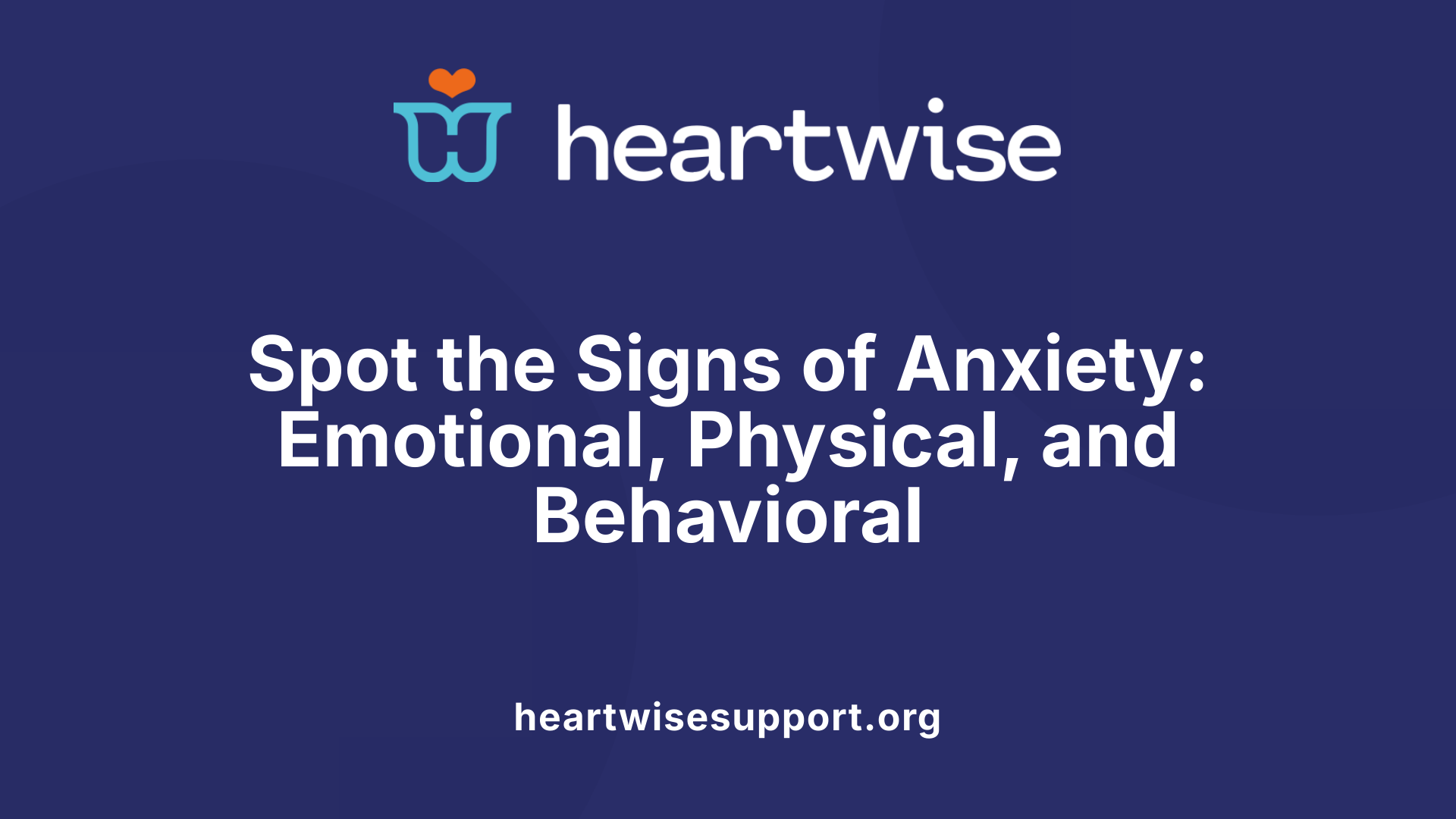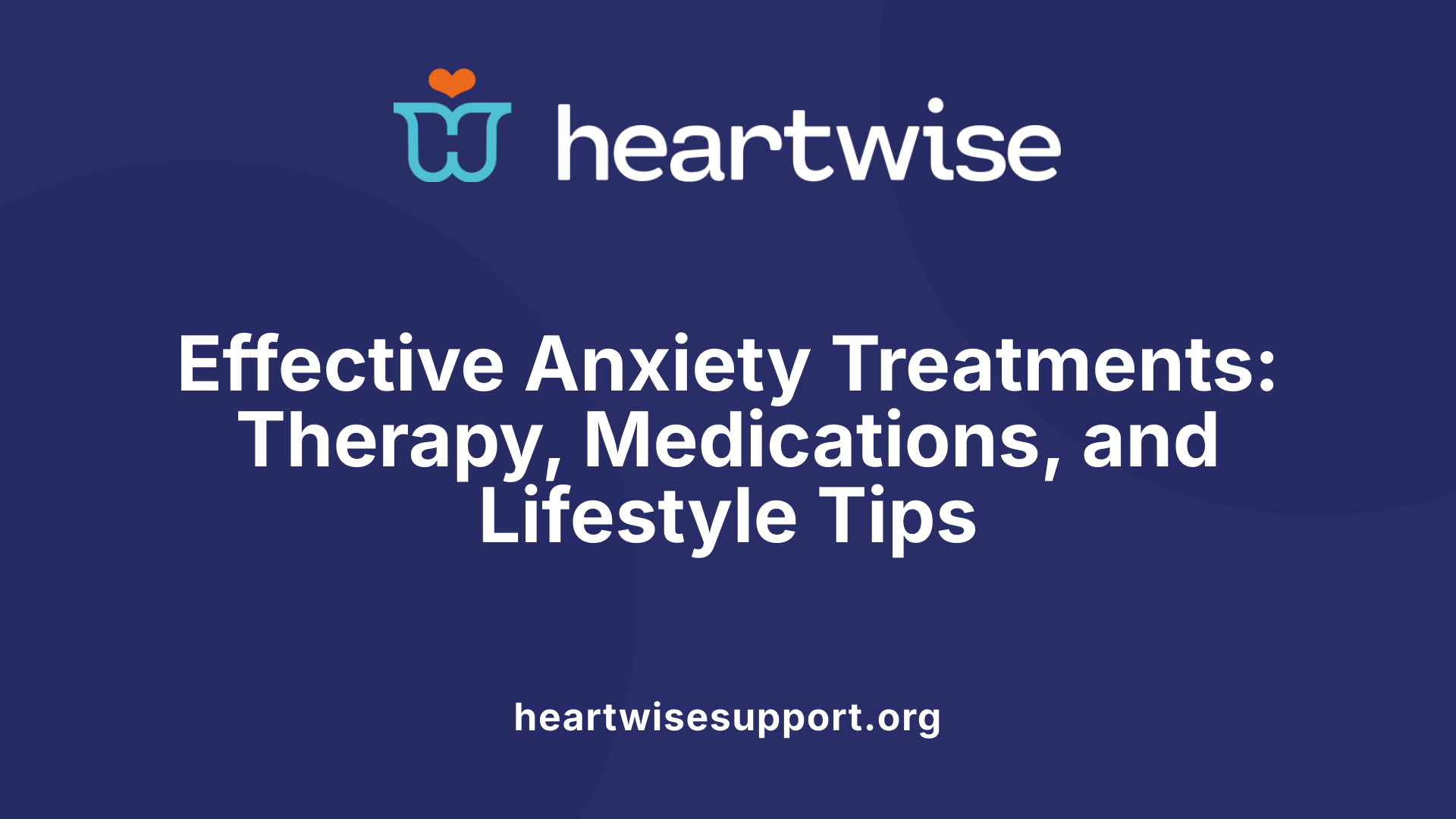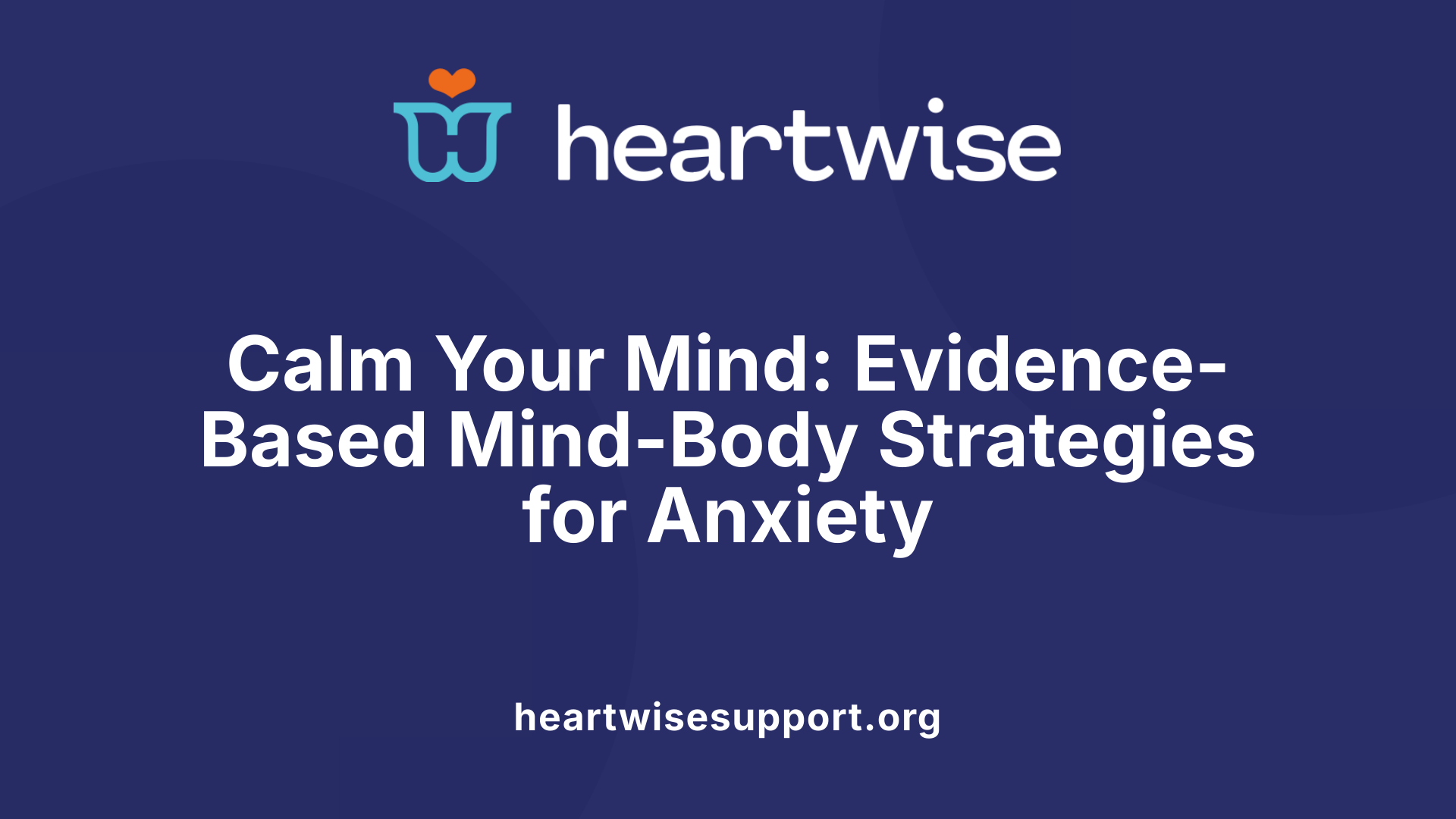Understanding Anxiety and Its Management
Anxiety disorders are common mental health conditions characterized by excessive worry, physical symptoms, and emotional distress that can interfere with daily functioning. Recognizing the symptoms, understanding their causes, and exploring effective treatment options are essential steps toward better mental health. This article delves into evidence-based approaches, from lifestyle changes to therapeutic interventions, helping individuals reduce anxiety and improve overall well-being.
Recognizing Anxiety: Symptoms and Causes

What are the common symptoms and causes of anxiety, and how is it diagnosed?
Anxiety manifests through a variety of physical, mental, and behavioral symptoms. Common emotional signs include excessive worry about future events, irritability, fatigue, difficulty concentrating, and feeling tense or restless. Physically, individuals may experience rapid heartbeat, sweating, trembling, headaches, chest pains, shortness of breath, muscle aches, nausea, and sweating episodes. Sleep disturbances and gastrointestinal issues such as diarrhea are also prevalent among those with anxiety disorders.
The causes of anxiety are diverse and often interconnected. Genetic predisposition plays a significant role, with a family history increasing the likelihood of developing anxiety disorders. Hormonal and neurotransmitter imbalances, specifically involving serotonin, GABA, and norepinephrine, can contribute to heightened anxiety levels. Environmental stressors such as work pressures, financial problems, family conflicts, or traumatic life events also serve as triggers.
Additionally, brain activity in regions like the amygdala, which processes fear and emotional responses, tends to be heightened in individuals with anxiety. Increased activity here can make a person more sensitive to perceived threats, reinforcing anxious feelings.
Diagnosing anxiety involves a thorough assessment carried out by a qualified mental health professional. Since there are no specific laboratory tests for anxiety, diagnosis relies heavily on clinical evaluation. The professional reviews the individual’s medical history, physical health, and the pattern and severity of symptoms. They also assess how much the symptoms interfere with daily functioning.
Differentiating between everyday nervousness and an anxiety disorder is essential. Anxiety becomes diagnosable when symptoms are persistent—lasting for six months or longer—and cause significant distress or impairment in social, occupational, or other important areas of functioning.
Early diagnosis allows for personalized treatment strategies, which may include psychotherapy such as cognitive-behavioral therapy, medication like SSRIs or benzodiazepines, and lifestyle modifications. Recognizing the symptoms early and understanding their causes can help individuals seek timely support and manage their anxiety effectively.
| Symptom Type | Examples | Impact/Notes |
|---|---|---|
| Emotional | Excessive worry, irritability, difficulty concentrating | Affects mental clarity and emotional stability |
| Physical | Rapid heartbeat, sweating, trembling, nausea | Can mimic heart issues; often distressing |
| Sleep and Gastrointestinal | Insomnia, diarrhea | Disrupts daily routine and health |
Evidence-Based Therapeutic Approaches

What are the main therapeutic approaches for treating anxiety disorders?
The primary treatments for anxiety disorders are psychotherapy and medication, often combined for the most effective results.
Psychotherapy, especially cognitive-behavioral therapy (CBT), is highly regarded. CBT aims to change negative thought patterns and behaviors that contribute to anxiety. It often includes exposure therapy, which involves gradually confronting fears to reduce sensitivity and redefine the perception of danger.
Medications are also commonly used to alleviate symptoms. These include selective serotonin reuptake inhibitors (SSRIs) and serotonin-norepinephrine reuptake inhibitors (SNRIs), which help regulate brain chemicals associated with mood and anxiety. Other medications such as buspirone are used for long-term management, while benzodiazepines and beta-blockers are typically considered for short-term or physical symptom relief.
Integrating therapy and medication often results in better outcomes than either approach alone. Treatment plans are personalized, considering the severity of the condition, patient preferences, and any comorbidities.
Lifestyle modifications provide valuable support but are usually adjunctive. Techniques like mindfulness, relaxation exercises, physical activity, and stress management can help reduce overall anxiety levels.
Summarized Treatment Strategies
| Approach Type | Main Features | Additional Notes |
|---|---|---|
| Psychotherapy (CBT) | Restructures negative thoughts, behavioral interventions, exposure | Often the first-line treatment; effective alone or combined |
| Medications | SSRIs, SNRIs, buspirone, benzodiazepines, beta-blockers | Used depending on symptoms; SSRIs typically preferred for long term |
| Lifestyle Modifications | Stress management, exercise, sleep, diet | Support overall mental health; adjunct to therapy and medication |
Additional Support Strategies
Support groups, education, and coping techniques also play critical roles in managing anxiety. Accurate understanding of the disorder helps individuals develop effective problem-solving skills. Establishing routines, engaging in physical activity, practicing mindfulness, and maintaining social connections further enhance overall treatment efficacy.
Search and Resources
For comprehensive guidance, searching
Mind-Body and Complementary Techniques

What are effective evidence-based mind-body techniques for managing anxiety?
Various mind-body practices have gained recognition for their role in reducing anxiety symptoms. Among these, mindfulness-based stress reduction (MBSR) and mindfulness meditation are particularly well-supported by scientific research. These practices involve paying attention to the present moment in a non-judgmental way, helping individuals detach from worries about the past or future. Studies, including randomized controlled trials, have shown that consistent practice of MBSR and meditation can significantly lower anxiety levels.
Yoga, tai chi, and Qigong serve as valuable adjunct therapies. These movement-based practices combine physical postures, breathing exercises, and mental focus, which contribute to calming nervous system responses. Evidence suggests that they help alleviate anxiety, especially in children, adolescents, and older adults, although some studies report varied outcomes due to differing methodologies.
Relaxation techniques such as progressive muscle relaxation, deep diaphragmatic breathing, heart rate variability (HRV) biofeedback, and applied relaxation are widely supported by research. They promote activation of the parasympathetic nervous system—the body's natural relaxation response—reducing muscle tension and heart rate. For instance, deep breathing exercises, which involve slow, deliberate inhalation and exhalation, help regulate hyperventilation common in anxiety episodes.
Hypnotherapy is another technique with moderate evidence backing its use, particularly for specific anxieties related to medical procedures and dental fears. When administered by trained professionals, hypnotherapy can facilitate relaxation and reduce anxiety responses.
How do these techniques help in managing anxiety?
Integrating these practices into daily routines or as part of a broader treatment plan can enhance coping, reduce stress, and improve overall mental health. They are generally considered safe, low-risk options suitable for most individuals. When combined with cognitive-behavioral therapy or medication, mind-body techniques can augment therapeutic effects, offering a comprehensive approach to anxiety management.
Overall, these evidence-based practices provide accessible, non-invasive strategies that empower individuals to control their anxiety symptoms effectively. They not only reduce immediate stress but also contribute to long-term resilience when practiced regularly.
Immediate Anxiety Reduction Strategies

What are effective strategies to reduce anxiety immediately?
When anxiety strikes suddenly, quick and practical techniques can provide relief and help regain a sense of calm. Engaging in calming breathing exercises, such as diaphragmatic or box breathing, is one of the most effective immediate tactics. These methods slow down the breathing rate and activate the body's relaxation response, reducing physical symptoms of anxiety like rapid heartbeat and hyperventilation.
Grounding techniques are also highly useful. The 5-4-3-2-1 exercise, for example, involves identifying five things you can see, four you can touch, three you can hear, two you can smell, and one you can taste. This exercise redirects focus from anxious thoughts to the present moment, helping to diminish feelings of distress.
Physical movements are another quick way to alleviate tension. Gentle stretching of the neck, face, or even seated stretches can release muscular tightness that often accompanies anxiety. Moving the body in a deliberate way helps dissipate excess energy and fosters a sense of control.
Visualization techniques, such as guided imagery, involve imagining a peaceful, safe scene. Focusing on detailed sensory experiences in this scene can produce a calming effect and lower anxiety levels.
Listening to calming music or one's favorite tunes can swiftly shift emotional states, providing comfort and distraction from distressing thoughts. Combining these methods—for instance, practicing deep, slow breathing while listening to music—can maximize their calming effects.
In addition, verbally expressing feelings or writing down worries in a journal can help externalize and process anxious thoughts, reducing their intensity. Together, these strategies form a toolkit that can help manage anxiety in moments of crisis, supporting emotional resilience and facilitating quick recovery.
Treatment Options and Professional Support
What are the available treatment options for anxiety, including medication and professional help?
Managing anxiety effectively involves a comprehensive approach that combines various treatment options tailored to the individual’s symptoms and needs. Psychotherapy, especially cognitive-behavioral therapy (CBT), is considered highly effective. It helps patients recognize and challenge negative thought patterns, confront fears gradually through exposure therapy, and develop healthier coping strategies. These approaches can significantly reduce anxiety symptoms and improve daily functioning.
In addition to psychotherapy, medications frequently prescribed include selective serotonin reuptake inhibitors (SSRIs) and serotonin-norepinephrine reuptake inhibitors (SNRIs). These antidepressants help balance brain chemicals associated with anxiety. Other medications like buspirone are used for long-term anxiety management, while benzodiazepines can provide quick relief of acute symptoms but are recommended for short-term use due to potential dependency risks. Beta-blockers are often employed to control physical symptoms such as rapid heartbeat and trembling during stressful situations.
Lifestyle factors also play a crucial role. Regular physical activity boosts endorphin levels, which can improve mood and reduce anxiety. Adequate sleep, balanced nutrition, and stress management techniques like mindfulness, relaxation exercises, and breathing methods support overall mental health.
Professional support is essential, especially when anxiety persists or severely impacts quality of life. Mental health specialists—including psychologists, psychiatrists, and counselors—can assess symptoms, diagnose specific anxiety disorders, and develop personalized treatment plans. Support groups and educational programs further empower individuals by providing shared experiences, strategies, and encouragement to manage their condition.
Ultimately, combining therapy, medication when appropriate, lifestyle adjustments, and ongoing support offers the best chance for effective anxiety management. Consulting a healthcare provider is the first step toward identifying suitable options and beginning a tailored treatment journey.
| Treatment Type | Common Interventions | Additional Notes |
|---|---|---|
| Psychotherapy | CBT, exposure therapy, mindfulness-based approaches, relaxation techniques | Proven to change thought patterns and reduce avoidance behaviors |
| Medications | SSRIs, SNRIs, buspirone, benzodiazepines, beta-blockers | Medications vary based on symptom severity and individual response |
| Lifestyle Changes | Exercise, sleep hygiene, nutrition, stress reduction | Supports overall mental health and complements other treatments |
| Support Systems | Support groups, educational resources, professional counseling | Critical for ongoing coping and emotional reinforcement |
Seeking professional help early improves treatment outcomes, reduces the long-term impact of anxiety, and enhances quality of life. Tailored combinations of therapy, medication, lifestyle, and support provide the most effective route to managing anxiety.
Practical Tips, Support, and Education for Anxiety Management
What practical tips and exercises can help manage anxiety?
Managing anxiety effectively often involves adopting simple, consistent practices that promote relaxation and mental clarity. One of the most accessible techniques is practicing breathing exercises. For instance, cyclic sighing—taking slow, deep breaths that produce audible sighs—or the 4-4-8 breathing method, where you inhale for four seconds, hold for four, and exhale for eight, can immediately reduce physical symptoms like rapid heartbeat and tension.
Mindfulness exercises also play a vital role in anxiety management. Techniques such as mindful meditation or the RAIN method (Recognize, Allow, Investigate, and Non-Identification) help individuals become aware of their thoughts and feelings without judgment. While mindfulness can be very helpful for general anxiety, experts suggest that social anxiety might sometimes be better approached with tailored strategies.
Regular physical activity is another cornerstone. Activities like walking, yoga, dancing, or swimming increase the production of endorphins—natural mood lifters—and help release pent-up tension. Combining these with good sleep hygiene, a nutritious diet, and limiting stimulants like caffeine can significantly enhance mental health.
Journaling is an effective way to identify personal anxiety triggers. By noting worries and emotional responses, individuals can better understand their patterns and develop personalized coping strategies. Establishing a routine that includes dedicated worry time—perhaps ten minutes daily—can confine anxious thoughts to a manageable period rather than letting them dominate the day.
Engaging with support networks is equally important. Sharing feelings with trusted friends, family members, or mental health professionals provides emotional relief and guidance. Activities such as listening to calming music, getting massages, or practicing self-care routines build resilience and provide comforting outlets.
These practical steps form a comprehensive approach that can be tailored to individual needs, supporting both immediate relief and long-term mental well-being.
Connecting with friends, family, or support groups can provide social relief.
Social connection is a powerful tool against anxiety. Reaching out to loved ones through conversations, phone calls, or video chats can significantly lower stress levels. Sharing worries and receiving understanding from others creates a sense of safety and belonging.
Support groups, both in-person and online—such as those offered by organizations like Mind or Anxiety UK—offer community and shared experiences. Participating in these groups can diminish feelings of isolation, normalize individual struggles, and promote the exchange of effective coping strategies.
In addition, professionals like therapists or counselors are trained to guide individuals through anxiety challenges. Group settings often encourage open dialogue, which helps reduce stigma and fosters collective healing.
Educational resources and increased awareness promote early detection, reduce stigma, and empower individuals to seek treatment.
Knowledge is empowering. Access to reliable information about anxiety disorders helps people recognize symptoms early, seek timely help, and understand that effective treatments exist. Educational campaigns and resources provide insights into how anxiety operates physiologically and psychologically, demystifying the condition.
Raising awareness reduces stigma, encouraging more people to pursue support without fear of judgment. This can be facilitated through community talks, online platforms, and distribution of informative materials.
Furthermore, early detection through education can prevent the escalation of anxiety symptoms into more complex mental health issues, such as depression or substance misuse. When individuals understand their condition, they are more likely to engage in proactive health management, including therapy, medication, lifestyle changes, and support groups.
Overall, combining practical exercises, social support, and education creates a robust framework for managing anxiety, improving quality of life, and fostering resilience.
Empowering Yourself with Knowledge and Support
Managing anxiety effectively requires a comprehensive approach that combines understanding its symptoms and causes, engaging in evidence-based therapies, practicing mind-body techniques, and adopting healthy lifestyle habits. Education and awareness are vital in reducing stigma and encouraging early intervention. Support from professionals, peer groups, and loved ones—along with practical self-care strategies—can significantly improve mental health and quality of life. By taking proactive steps and seeking appropriate treatment, individuals can regain control over their anxiety and lead healthier, more fulfilling lives.
References
- Anxiety disorders - Diagnosis and treatment - Mayo Clinic
- 9 ways you can tame anxiety - Mayo Clinic Health System
- Anxiety self-care | Types of mental health problems - Mind
- Mind and Body Approaches for Stress and Anxiety
- Anxiety Disorders: Causes, Symptoms, Treatment & Types
- Managing Stress | Mental Health - CDC
- Managing and treating anxiety | Better Health Channel
- 4 Ways to Reduce Anxiety | Northwestern Medicine
- 10 strategies for managing anxiety - Beyond Blue











